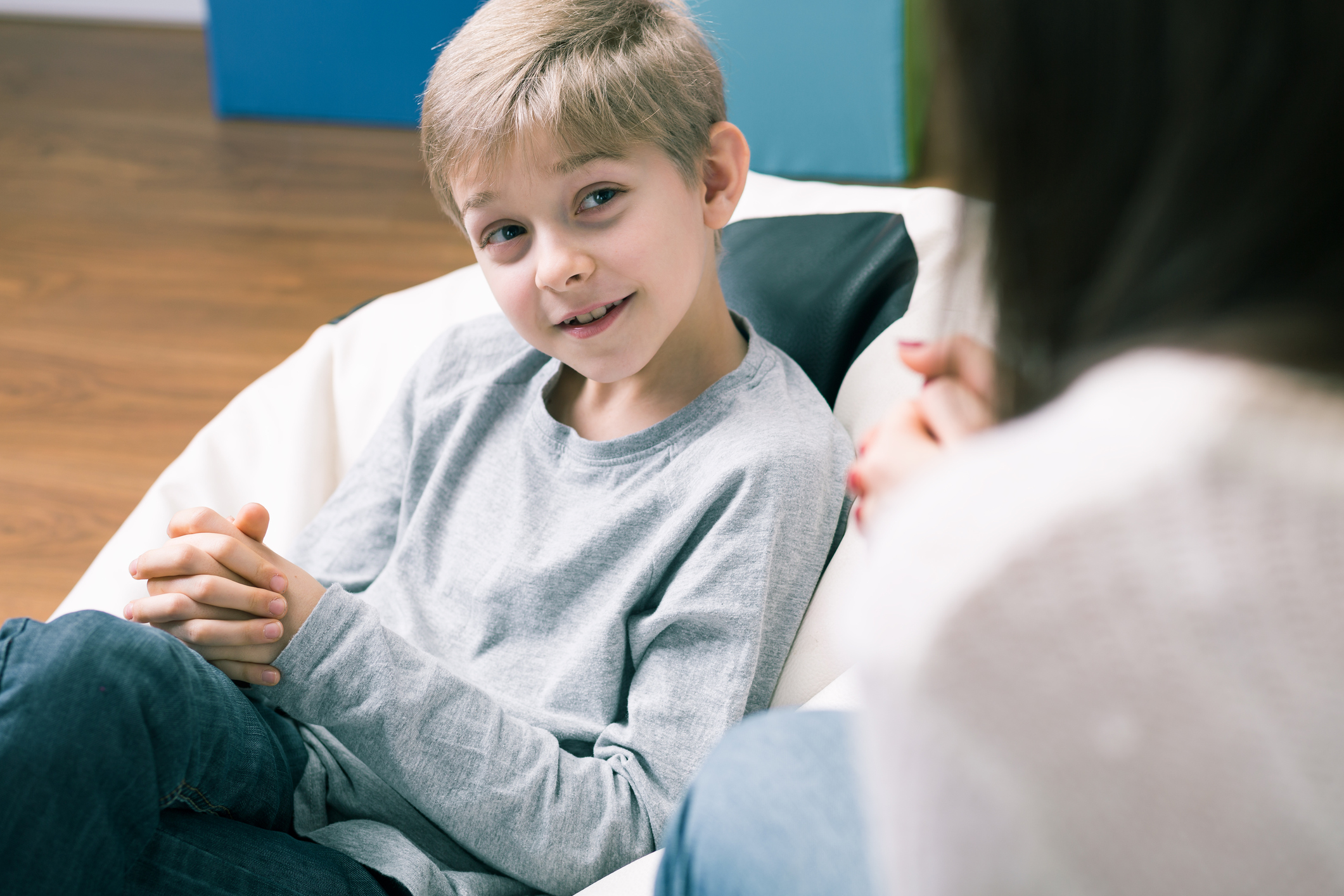Children (like adults) often report thoughts and beliefs which they find distressing (for example: “I’m horrible”; “people think I’m boring”; picturing themselves doing badly on a test).
There are different ways parents/caregivers might help their child cope with these. For example, we might help young people to think about whether their thoughts and feelings are really true – and whether there are alternative thoughts and beliefs which might be more accurate and helpful.
Another way of parents/caregivers helping young people to understand and manage distressing thoughts, images and beliefs is called cognitive defusion and acceptance.
This strategy was first (or at least most famously) developed as part of an Acceptance Commitment Therapy (ACT) approach (Hayes, 1999) to psychological problems. An ACT approach states that human problems occur (at least in part) not because of the content of people’s thoughts, images and beliefs but instead because of the way people have learnt to automatically view, understand and respond to them as if they were ‘real things’ or purely ‘literal events’ – when people do this, it is called ‘cognitive fusion’.
Cognitive defusion on the other hand, is the process of viewing, understanding and responding to these thoughts, images and beliefs as harmless words, pictures and sensations which were created by and merely exist in the mind – and which are neither good, nor bad. Sometimes cognitive defusion is called ‘stepping away’ from thoughts/internal experiences or ’seeing them for what they are, not what they claim to be’.
For example, if a child is fused with the thought: “I am horrible” – they react to and understand this thought as if it was not only true, but also awful, important and something which needs to be fixed. If they are defused from this thought, they see it as just a group of words which predictably occur in their mind (for example, by thinking “my mind always says that when I am tired”), is unable to hurt them and that doesn’t need them to pay attention or do anything about it.
To help children experience cognitive defusion with their thoughts and beliefs, therapists might try to create exercises for them which they experience their thoughts and, beliefs in different contexts to those in which they typically experience them. For example, to create a defusion experience for a child about their thought: “I am horrible” a therapist might get them to ‘sing’ this “I am horrible” sentence to the tune of the ‘happy birthday song’.
Essentially, cognitive defusion techniques help children realise that a thought is ‘just a thought’ and doesn’t hold any power over them, and there are many creative and playful ways to help children learn how to do this.
Defusion can lead to acceptance of internal experiences, which according to ACT therapists may reduce at least some of the distress associated with the thoughts and more importantly, increase the child’s ability to make flexible decisions about what they do when these thoughts occur. For example, if a young person sings their “I am horrible” thought, they may experience a sense of defusion (this is just a thought) and therefore may be more able to not react or struggle with this thought – and instead accept it – and not spend time thinking about it or withdrawing from others.
An example of a defusion exercise for children
In order to understand how we might use defusion with children, here is an example of an activity which may be useful. The ‘script’ below gives some ideas about words which might be used during this exercise, and drawings which could be done while talking about this topic.
You will note that the script below includes both an option for words which can be used for children managing challenges related to anxiety (‘worry monsters’), and for those struggling with feelings of frustration (‘mad monsters’).
The ideas in this script can also be used with adolescents, but some changes in language might be useful – for example, using the words ‘anxiety’ or ‘anger’ rather than ‘worry’ or ‘mad’ or using the phrase ‘in charge’ rather than ‘the boss’.
Sometimes we have lots of worry/mad monsters which float around us and tell us lots of worried/mad thoughts and give us lots of worried/mad feelings. (Draw figure, with simple ‘monsters’ around the figure).
Everyone has worry/mad monsters! They hang around us telling us all the problems and things which can go wrong/things that are not fair.
What kind of worry/mad monsters do you have? (Support the child to identify thoughts which come just before or are associated with their distress). It seems you have a “I might get hurt” worry monster. It seems you have a “I’m bad” worry monster. It seems you have a “Not fair” mad monster. (Write the words ‘I’m bad’ etc inside the monsters).
Our ‘worry/mad monsters’ tell us what to do – they might tell us to stay away from…./make us yell (support the child to identify any unhelpful behaviour they use after their distress).
They can be really loud – and so we try to make them go away by doing what they tell us.
But here’s an important thing to know: When we take a close look at our worry/mad monsters, they are not as big and powerful as they seem.
They are just annoying little things, and they can’t actually hurt us. (Redraw monsters but smaller, or make person figure larger). They are just like little buzzy mosquitos/flies/little loud toddlers. They might be loud sometimes, but they can’t make us do anything. We don’t have to do what they say after all!
And here is another thing to know about our worry/mad monsters: They are not real, they are just things WE made in our brain. And because we made them, we can play around with them!
Let’s have a play. Let’s draw your “I am dumb” worry monster/”Not fair” mad monster.
Now can you draw it with a silly hat on? How about with multi-colour socks?
Let’s imagine it with a very squeaky mouse voice. Can you say “I’m dumb”/”Not fair” in a squeaky mouse voice?
Now you can see your worry/mad monsters are not big or powerful. You can be the boss of them.
We can’t get rid of them, but that’s okay, they can come along with us while we do stuff that is important to us.
Shall we cut them out and put them in your pocket to take around with you today? (Cut out drawings of monsters for child to take home).
Helping your child defuse from their distressing thoughts by using playful or creative strategies like these can really help them understand that they are just having a thought and that they don’t need to believe or act on these thoughts.
Over time, they can learn to ‘step away’ from these thoughts/beliefs and become less affected or distressed by them – this can have a lasting benefit on their emotional wellbeing and self-confidence.
You might like to introduce these ideas to your own young person through the kinds of conversations outlined above. You can also reinforce these ideas by talking about your own thoughts in the same way (“My mind is giving me thoughts about….”, “I’m having a sticky thought’).
It is really important we do not do this in a way which suggests to young people that they should not be upset by the tough stuff in their lives – and to continue being empathic and caring during the times they feel worried and sad.
If you would like more information about this approach, you might like to google “Acceptance and Commitment Therapy” and “children”, as there are a few articles online which might be helpful. You should also of course speak to a health professional about ongoing concerns you have about your young person’s challenges, and always do so if you have worries about their safety.



